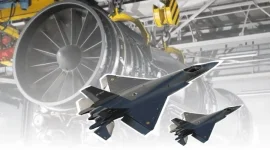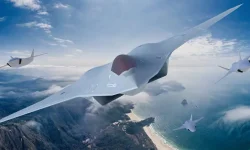- Views: 839
- Replies: 5
India's defence sector is marking a new chapter with the development of the Zorawar light tank, a project that places a significant emphasis on visual design alongside combat performance.
Developed jointly by the Defence Research and Development Organisation (DRDO) and private sector firm Larsen & Toubro (L&T), the Zorawar tank signals a strategic shift in India's approach to military hardware, acknowledging that a weapon's appearance can be a crucial asset.
Named after the legendary 19th-century general Zorawar Singh Kahlon, renowned for his military campaigns in the Himalayas, the tank is engineered for specialised high-altitude combat, particularly in regions like Ladakh.
Its design features a low-profile silhouette, clean, angular lines, and a compact frame, giving it a distinctly modern and formidable appearance. This futuristic look is complemented by an advanced camouflage pattern designed to effectively conceal the tank in rugged mountain landscapes.
The aesthetic choices are directly linked to its function, as the sleek structure enhances stealth, agility, and manoeuvrability in challenging terrains where traditional, bulkier tanks would struggle.
The impressive design of the Zorawar serves a purpose that extends beyond the battlefield. In military strategy, the visual projection of power can be a significant psychological tool.
A technologically sophisticated and modern-looking weapon system can serve as a powerful deterrent to potential adversaries while boosting the morale and confidence of the armed forces operating it.
Furthermore, as India aims to increase its presence in the global defence export market, the Zorawar's striking design could become a key selling point, attracting international buyers who value both performance and state-of-the-art aesthetics.
Moreover, a commitment to superior design drives technological advancement and innovation in materials science. To achieve the Zorawar's compact and lightweight form, estimated to be around 25 tonnes, engineers likely utilised advanced composites and cutting-edge engineering methods.
This focus on creating a visually appealing yet highly mobile platform encourages the defence industry to refine its manufacturing capabilities and push technological boundaries.
This approach is critical for a light tank whose effectiveness depends heavily on its power-to-weight ratio and ability to be deployed rapidly.
The Zorawar light tank represents a progressive step for India's indigenous defence manufacturing. By successfully merging form with function, it sets a new standard for future military projects.
For India to establish itself as a leading innovator in the defence sector, this philosophy of creating visually iconic and technologically superior systems should be consistently applied across all future platforms, including naval ships and fighter aircraft.




